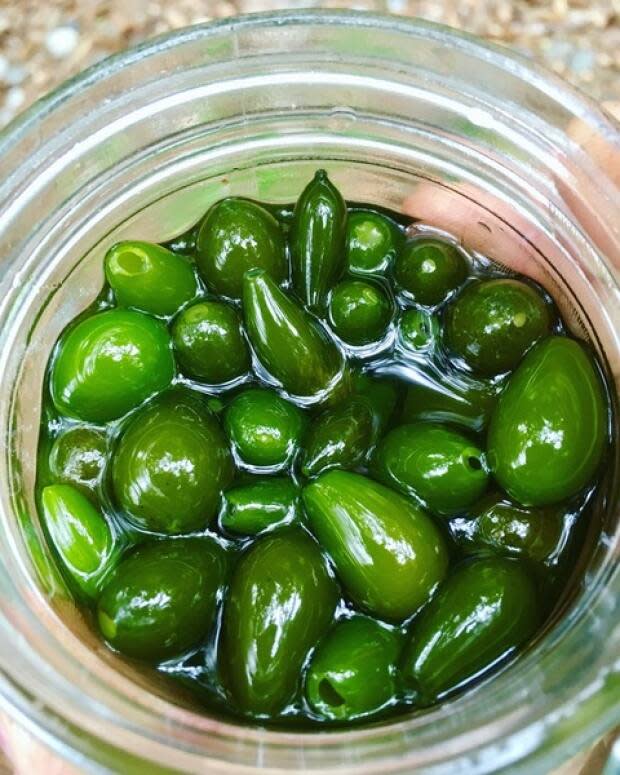Beyond sushi: 'Nature's Chef' shares tips, recipes for cooking with seaweed
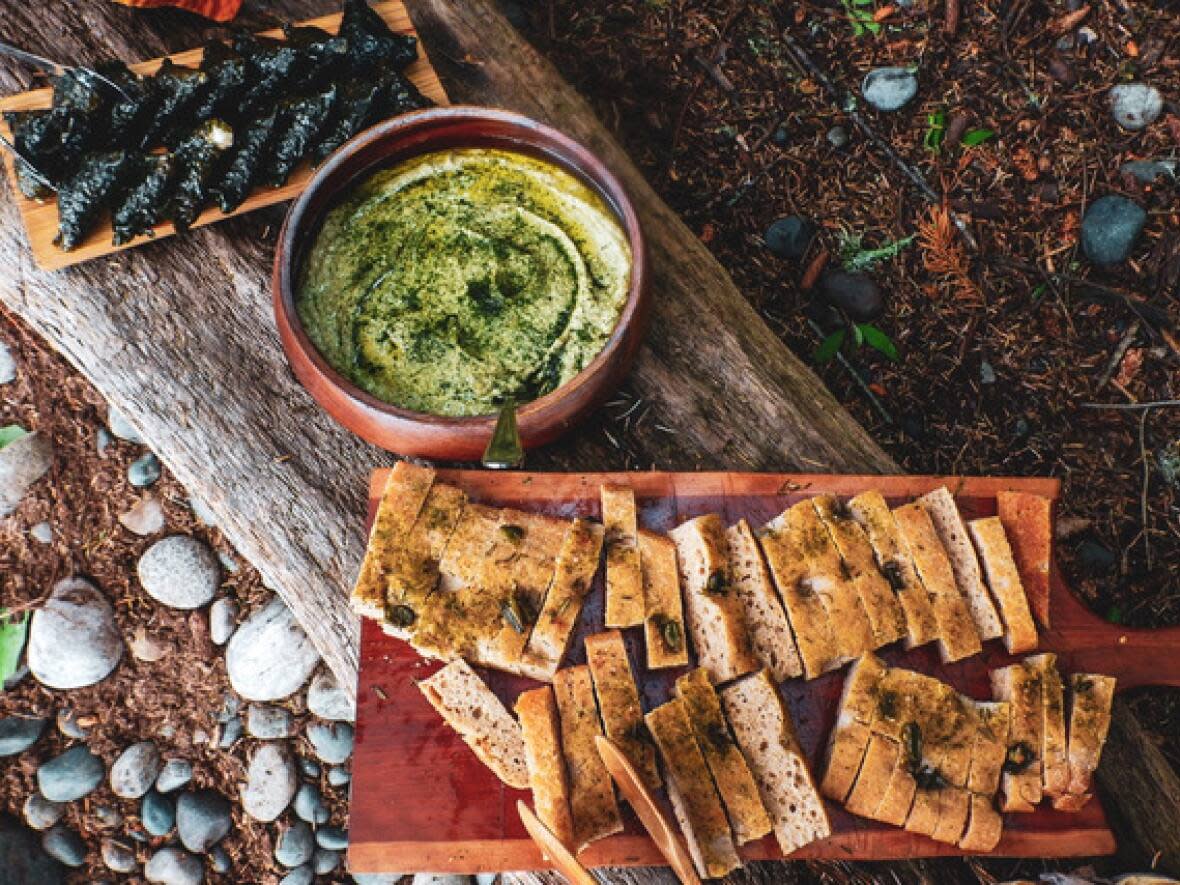
It can be unnerving when seaweed grazes your leg during a morning swim, and smell unpleasant when it's washed up on the beach.
But it can also be a hearty substitute for land-based vegetables.
Chef Tom Kral, also known as 'Nature's Chef', specializes in wild foods. In particular, he loves working with different types of seaweed.
He says his interest in the sea plant came naturally. "It was the call of the wild," he told All Points West guest host Kathryn Marlow.
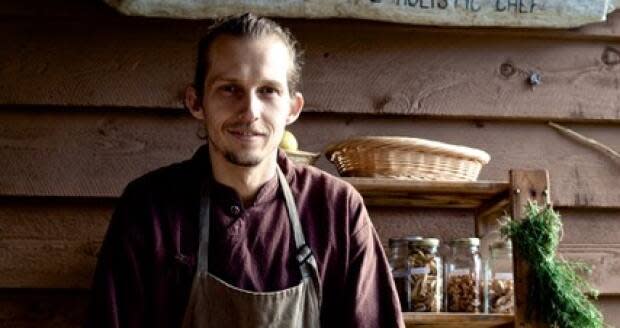
He says bull kelp, the long seaweed with an onion-like bulb at the end, is his favourite to cook with.
He likens its taste to green pepper and says it pairs well with tomatoes, making it a great addition to salsas and other sauces.
The best way to harvest it, he says, is to simply swim or paddle out to it — and grab it. To dry it, he suggests hanging seaweed on a clothesline or somewhere inside the house.
"It'll make nice decorations in your house," Kral said.
Once it's dried, it can last up to 10 years, he added.
Here are some of Kral's favourite ways to cook with seaweed:
Bull Kelp Cannelloni
Cannelloni (sauce below):
12 pieces of fresh bull kelp fronds, about 10 inches in length
4 cups packed borage leaves (substitutions: lamb's quarters, nettle, or spinach)
1/2 a lemon, zested
2 cups ricotta
1 large egg
1/2 tsp salt
1/4 tsp white pepper
2 tbsp extra virgin olive oil
Preheat the oven to 375 F.
Fill a large pot with water and bring it to a boil. Add the kelp fronds for about 10 seconds, then run them under cold water to cool them down. Drain the fronds and lay them out on a tray.
Place the borage leaves in the boiling water for about 30 seconds, followed by running under cold water and draining them, too. Squeeze as much liquid as possible out of the leaves, then chop them finely.
In a bowl, add the ricotta cheese, borage leaves, lemon zest, egg, salt and pepper, and mix well.
Take the ricotta filling, add a big scoop to the bottom of a kelp frond, and roll it up into a cannelloni. Do this for each frond.
Place the cannellonis into a baking dish and drizzle with olive oil. Bake at 375 F for 20 minutes.
Lentil bolognese:
2 cups sprouted brown lentils
12 roma tomatoes, peeled and chopped
250 ml canned tomato paste
2 medium onions, chopped
2 cups water
4 garlic cloves, chopped
4 sprigs fresh basil, chiffonade
1/4 cup sunflower oil
1 tbsp salt
1 tsp pepper
1 tsp chili flakes
In a non-reactive sauce pot, gently cook onions in sunflower oil over medium heat.
Once translucent, add the chopped tomatoes and sauté for five minutes.
Then add the garlic and sauté for another two minutes.
Add in the rest of the ingredients and simmer for half an hour, until the lentils are soft.
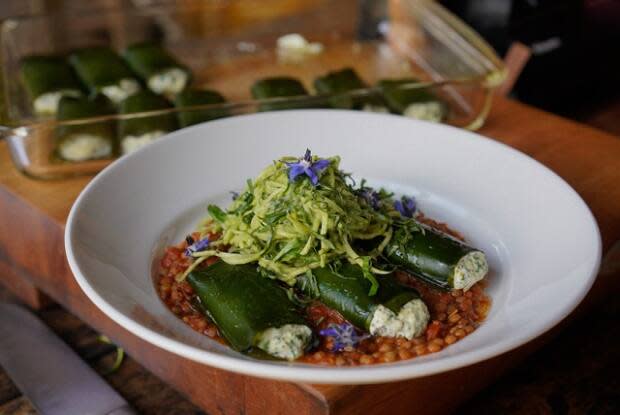
Bull Kelp Pickles
1 fresh bull kelp stipe (stem)
2 1/2 cups vinegar
2 1/2 cups water
1/4 cup salt
2 tbsp sugar
1 tbsp pickling spice
3 garlic cloves, sliced
Put vinegar, water, salt, sugar, pickling spices and garlic into a pot and slowly bring to a boil, creating the brine.
Cut the bull kelp stipe into rings. Blanch each one in boiling water for about 30 seconds, and shock in cold water immediately after. Place the kelp rings in jars.
When the brine comes to a boil, pour into jars to cover the kelp. Place the lids on the jar but leave a gap, allowing brine to cool.
Bull kelp pickles can be stored in the fridge for weeks, or canned like regular pickles.
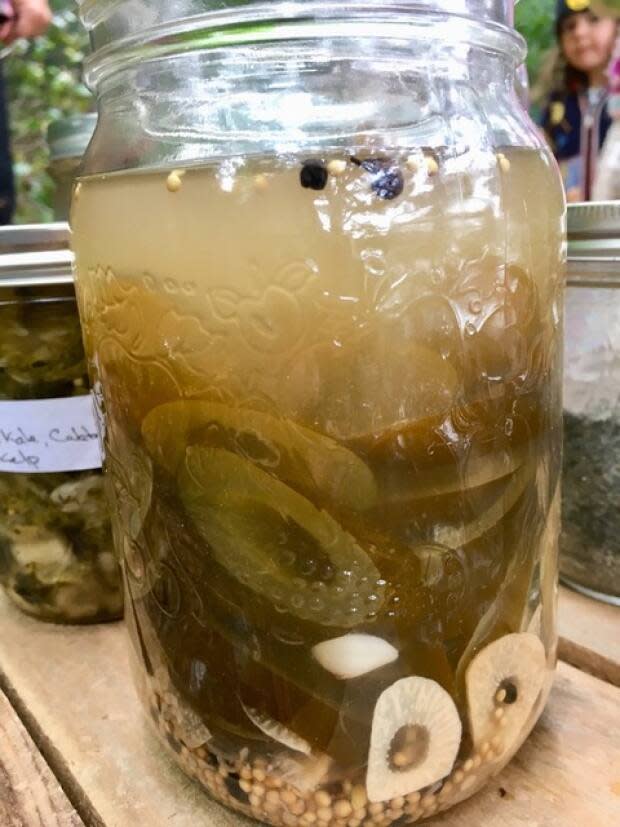
Sea Olives
1 cup fresh picked feather boa kelp pods
1 litre water
40 mg salt
Put the water and salt in a pot and bring to a boil. Cut a small hole where the pod attaches to the stem, to allow liquid to flow in.
Blanch the kelp in boiling water for 10 seconds, then quickly shock it in cold water.
Transfer the kelp to a jar. When the water and salt, or brine, comes to a boil, pour it into the jars to cover the kelp.
Leave the lids off, allowing the brine to cool, then refrigerate.
The sea olives can be stored in the fridge for up to four days.
